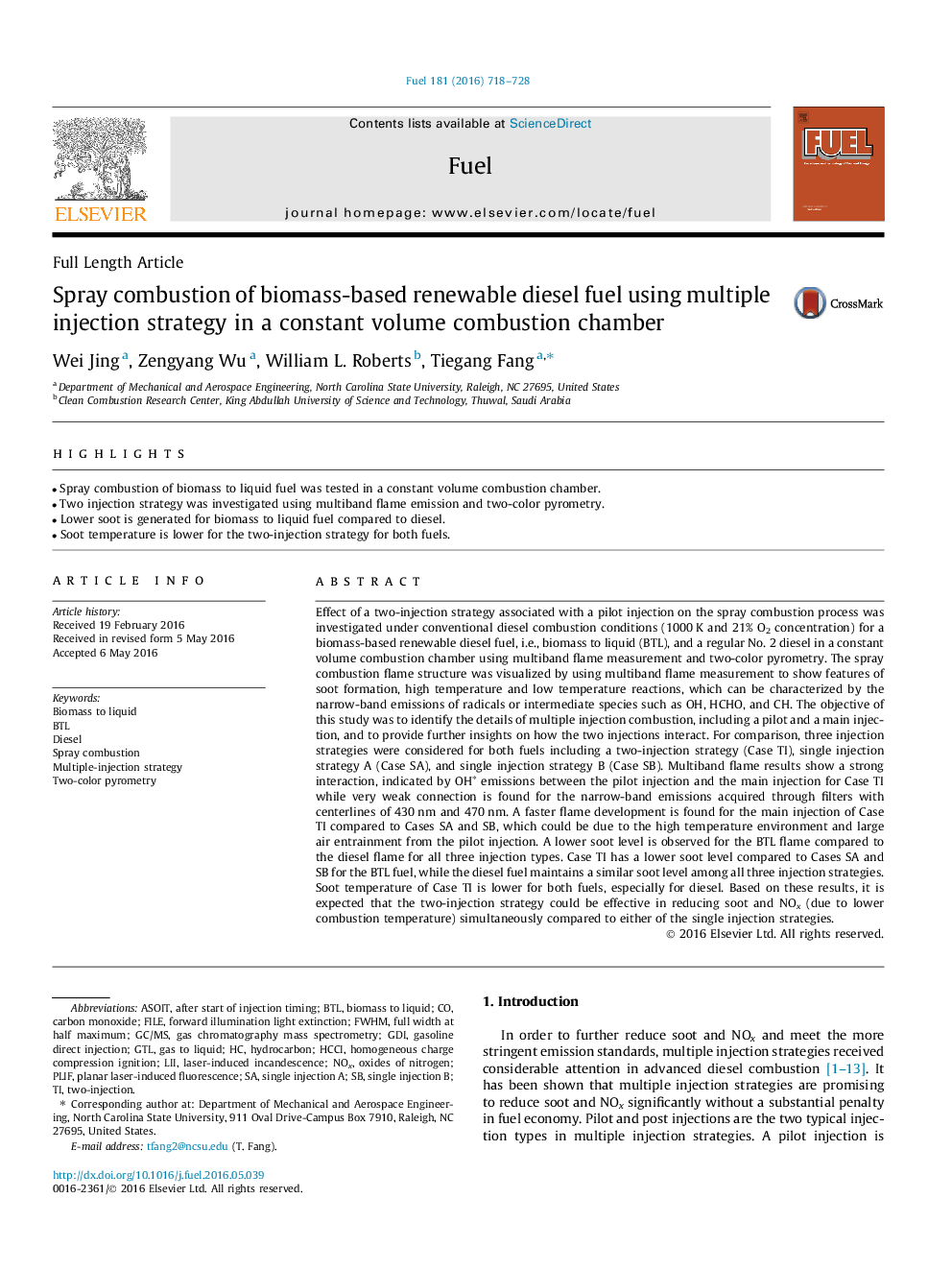| Article ID | Journal | Published Year | Pages | File Type |
|---|---|---|---|---|
| 204959 | Fuel | 2016 | 11 Pages |
•Spray combustion of biomass to liquid fuel was tested in a constant volume combustion chamber.•Two injection strategy was investigated using multiband flame emission and two-color pyrometry.•Lower soot is generated for biomass to liquid fuel compared to diesel.•Soot temperature is lower for the two-injection strategy for both fuels.
Effect of a two-injection strategy associated with a pilot injection on the spray combustion process was investigated under conventional diesel combustion conditions (1000 K and 21% O2 concentration) for a biomass-based renewable diesel fuel, i.e., biomass to liquid (BTL), and a regular No. 2 diesel in a constant volume combustion chamber using multiband flame measurement and two-color pyrometry. The spray combustion flame structure was visualized by using multiband flame measurement to show features of soot formation, high temperature and low temperature reactions, which can be characterized by the narrow-band emissions of radicals or intermediate species such as OH, HCHO, and CH. The objective of this study was to identify the details of multiple injection combustion, including a pilot and a main injection, and to provide further insights on how the two injections interact. For comparison, three injection strategies were considered for both fuels including a two-injection strategy (Case TI), single injection strategy A (Case SA), and single injection strategy B (Case SB). Multiband flame results show a strong interaction, indicated by OH∗ emissions between the pilot injection and the main injection for Case TI while very weak connection is found for the narrow-band emissions acquired through filters with centerlines of 430 nm and 470 nm. A faster flame development is found for the main injection of Case TI compared to Cases SA and SB, which could be due to the high temperature environment and large air entrainment from the pilot injection. A lower soot level is observed for the BTL flame compared to the diesel flame for all three injection types. Case TI has a lower soot level compared to Cases SA and SB for the BTL fuel, while the diesel fuel maintains a similar soot level among all three injection strategies. Soot temperature of Case TI is lower for both fuels, especially for diesel. Based on these results, it is expected that the two-injection strategy could be effective in reducing soot and NOx (due to lower combustion temperature) simultaneously compared to either of the single injection strategies.
